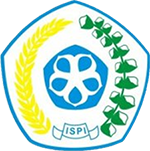Peningkatan Minat dan Hasil Belajar Matematika Siswa SMK Menggunakan Model PBL
DOI:
https://doi.org/10.23917/jptp.v1i1.977Keywords:
PBL, Interest In Learning, Math Learning ResultsAbstract
This research is motivated by the interest in learning of SMK Taman Karya Madya Pertambangan Kebumen students which are classified as low criteria with an average of 37.5%. Meanwhile, students' mathematics learning outcomes are also still unsatisfactory, with no students who complete with an average score of 58.33. Based on the problems above with Power Point (PPT) media. in increasing interest and learning outcomes of mathematics in linear program material for students of Class X SMK Taman Karya Madya Pertambangan Kebumen. 12 children as subjects and carried. Showed that interest in learning increased from the pre-cycle results from the low category with an average of 37.5% to the medium category with an average of 63.02%. Furthermore, in the implementation in cycle 2, interest in learning again increased to the high category with an average of an average of 77.60%. Likewise, the percentage of students who completed the learning outcomes test increased from the pre-cycle results to an average of 58.33 to 73.75 and in the second cycle increased to 80.83. Likewise, the percentage of students who completed the mathematics learning outcomes test increased to 83.33%.
References
Aritonang, K. T. (2008). Minat Dan Motivasi Dalam Meningkatkan Hasil Belajar Siswa. Jurnal Pendidikan Penabur, 7(10), 11–21. https://doi.org/10.1017/CBO9781107415324.004
Ashari, N. W., & Salwah. (2017). Problem Based Learning (Pbl) Dalam Meningkatkan Kecakapan Pembuktian Matematis Mahasiswa Calon Guru. Jurnal Matematika Dan Pendidikan Matematika, 2(2), 100–109.
Barta, J., & Shockey, T. (2006). The Mathematical Ways Of An Aboriginal People: The Northern Ute. Journal of Mathematics and Culture, 1(1), 79–89.
Delisle, R. (1997). How to use problem-based learning in the classroom. Alexandria. VA: ASCD Publications.
Essie, E. E., Akpan, O. E., & Obot, I. M. (2015). Students’ Interest In Social Studies And Academic Achievement In Tertiary Institutions In Cross River State, Nigeria. European Journal of Training and Development Studies, 2, 35–40.
Frenzel, A. C., Goetz, T., & Perkrun, T. (2010). Development Of Mathematics Interest In Adolescence: Influences Of Gender, Family, And School Context. Journal If Research in Adilescence, 20(2), 507–537. https://doi.org/10.1111/j.1532-7795.2010.00645.x
Goulart, P., & Bedi, A. S. (2011). The Impact Of Interest In School On Educational Success In Portugal (No. IZA Discussion Paper No 5462).
Hadi, F. R. (2016). Penerapan Pembelajara Problem Base Learning (Pbl) Untuk Meningkatkan Hasil Belajar Matematika Siswa Kelas IV. Profesi Pendidikan Dasar, 3(2), 80–87.
Heinze, A., Reiss, K., & Rudolph, F. (2005). Mathematics Achievement And Interest In Mathematics From A Differential Perspective. ZDM, 37(3), 212– 220.
Kpolovic, P. J. (2014). Academic Achievement Prediction: Role Of Interest In Learning And Attitude Towards School. International Journal Humanities Social Sciences and Education (IJHSSE), 1(11), 73–100.
Lazaridoe, R., & Lttel, A. (2012). Mathematics Interest And Achievement: What Role Do Perceived Parent And Teacher Support Play? A Longitudinal Analysis. Intenational Journal of Gender, Science and Technology, 5(3), 207–231.
Lestari, Eka, K. dan Yudhanegara, M. R. (2017). Peneltian Pendidikan Matematika. Bandung: Refika Aditama.
Michelsen, C., & Sriraman, B. (2009). Does Interdisciplinary Instruction Raise Students’ Interest In Mathematics And The Subjects Of The Natural Sciences? ZDM Mathematics Education, 41(1), 231–244.
Niss, M., Blum, W., & Galbraith, P. (2007). Introduction. In W. Blum, P. L. Galbraith, H.-W. Henn, & M. N. (Eds.) (Eds.), Modelling and Applications in Mathematics Education (pp. 3–32). New York: Springer.
Nurhidayati, D. D. (2016). Peningkatan Pemahaman Manajemen Waktu Melalui Bimbingan Kelompok Dengan Teknik Problem Solving Pada Siswa. Psikopedagogia: Jurnal Bimbingan dan Konseling, 5(1), 24-32.
Permendikbud. (2016). Peraturan menteri pendidikan dan kebudayaan nomor 22 tahun 2016 tentang standar proses pendidikan dasar dan menengah.
Powner, L. C. (2006). Teaching The Scienti?c Method In The Active Learning Classroom. Proquest Social Science Journals, 3, 521–524.
Priyanti, A. E., Wiarta, I. W., & Ardana, I. K. (2016). Pendekatan Saintifik Berbasis Problem Based Learning Berpengaruh Terhadap Hasil Belajar Pengetahuan Matematika Siswa Kelas IV SD Gugus P.B. Sudirman Denpasar Tahun Ajaran 2015/2016. Jurnal PGSD Universitas Pendidikan Ganesha, 4(1), 1–10.
Schwarzkopf, R. (2007). Elementary Modeling In Mathematics Lessons: The Interplay Between “Real-World” Knowledge And “Mathematics Structures.” In W.Blum, P. L.Galbraith, H.W.Henn, M.Niss, & (Eds.) (Eds.), Modelling and applications in mathematics education: The 14th ICMI study (pp. 209–216). New York: Springer.
Slameto. (2010). Belajar dan Faktor-Faktor yang Mempengaruhi. Jakarta: Rineka Cipta.
Suryabrata. (2002). Psikologi pendidikan. Yogyakarta: Rake Press.
Syah, M. (2013). Psikologi belajar. Jakarta: PT. Raja Grafindo Persada.
Wijaya, A., Heuvel-panhuizen, M. Van Den, Doorman, M., & Robitzch, A. (2014). Difficulties in Solving Context-Based PISA mathematics tasks?: An analysis of students ’ errors. The Mathematics Enthusiast, 11(3), 555–584.
Willis, J. (2010). Learning To Live Math: Teaching Strategies That Charge Student Attitudes And Get Results. Alexandria, VA: ASCD Publications.
Downloads
Submitted
Published
Issue
Section
License
Copyright (c) 2022 Jurnal Penelitian Tindakan Pendidikan

This work is licensed under a Creative Commons Attribution 4.0 International License.







